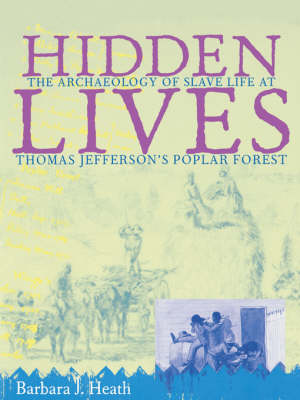LIKE MONTICELLO, Thomas Jefferson's Poplar Forest offers a significant archaeological view of slave life at the turn of the nineteenth century in rural Virginia. In Hidden Lives, Barbara J. Heath re-creates the daily life of slaves at Jefferson's second home from 1773, the year he inherited the plantation, until 1812, when his reorganization of its landscape resulted in the destruction of a slave quarter. Drawing on census data, letters, memoranda, and other primary material, Heath describes the slave community's family ties, the agricultural cycle of work, and the sickness and health care they experienced. Her portrait is enhanced by fresh archaeological findings and a wealth of illustrations, including site and contemporary maps, ../images of slaves at work and at home, artifacts, and interpretive drawings.
By looking at the social meaning of buildings, yards, and artifacts, Heath presents new interpretations of how individuals used materials to create a sense of self and community, how they acquired belongings, and how they safeguarded them. For visitors to historic sites and students and scholars of archaeology, Heath's book offers a visual and textual exploration of complex relationships within the plantation and of the resulting choices, compromises, and limitations that Jefferson's slaves negotiated in the process of making a home within the confines of institutionalized slavery.
- ISBN13 9780813918679
- Publish Date 31 May 1999
- Publish Status Active
- Publish Country US
- Imprint University of Virginia Press
- Format Paperback
- Pages 96
- Language English
